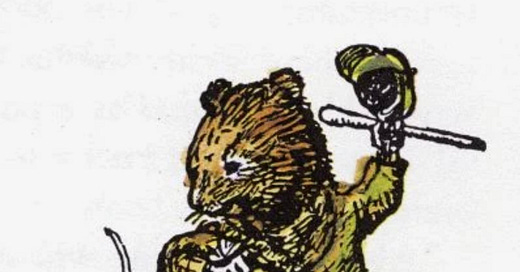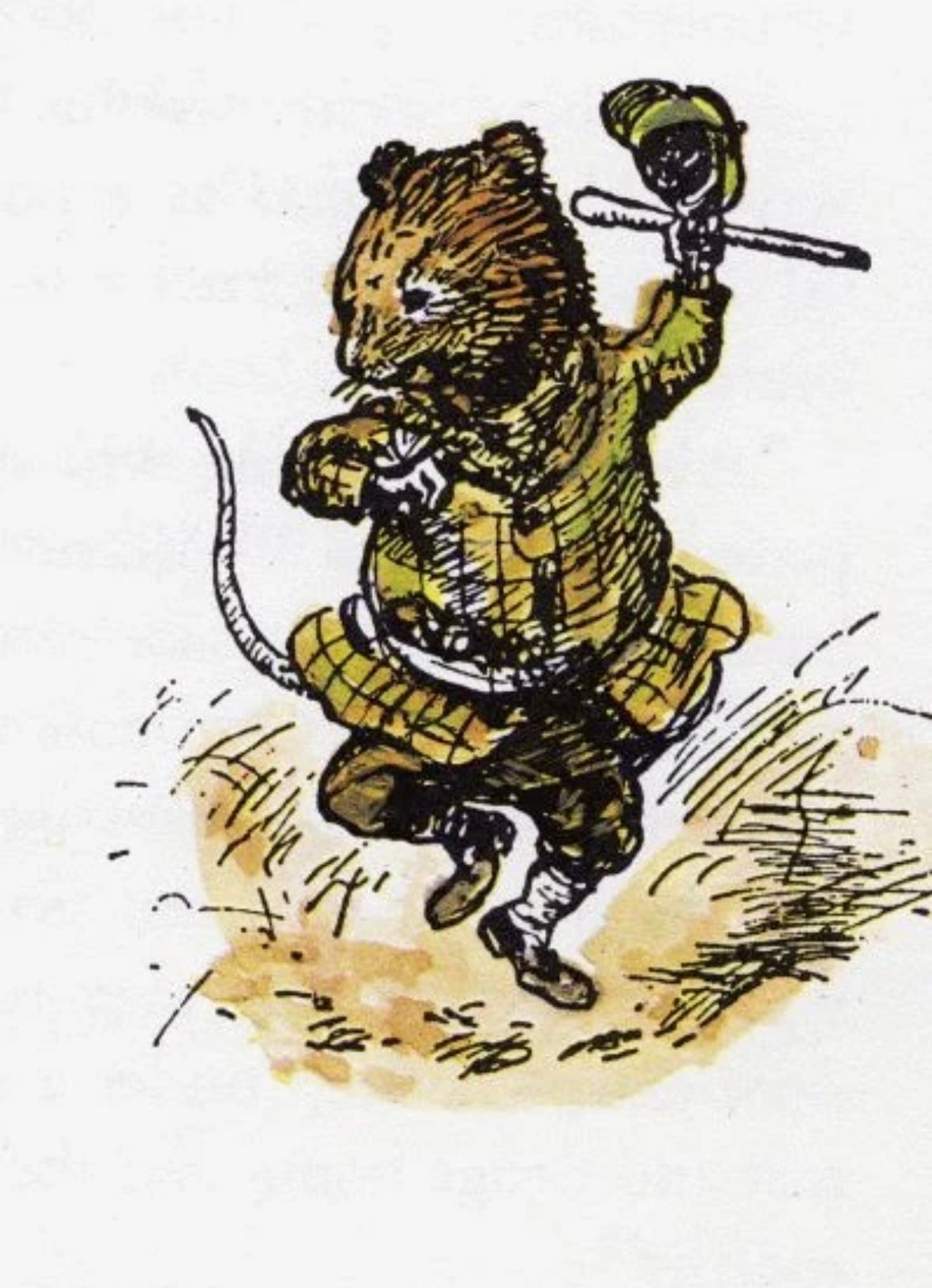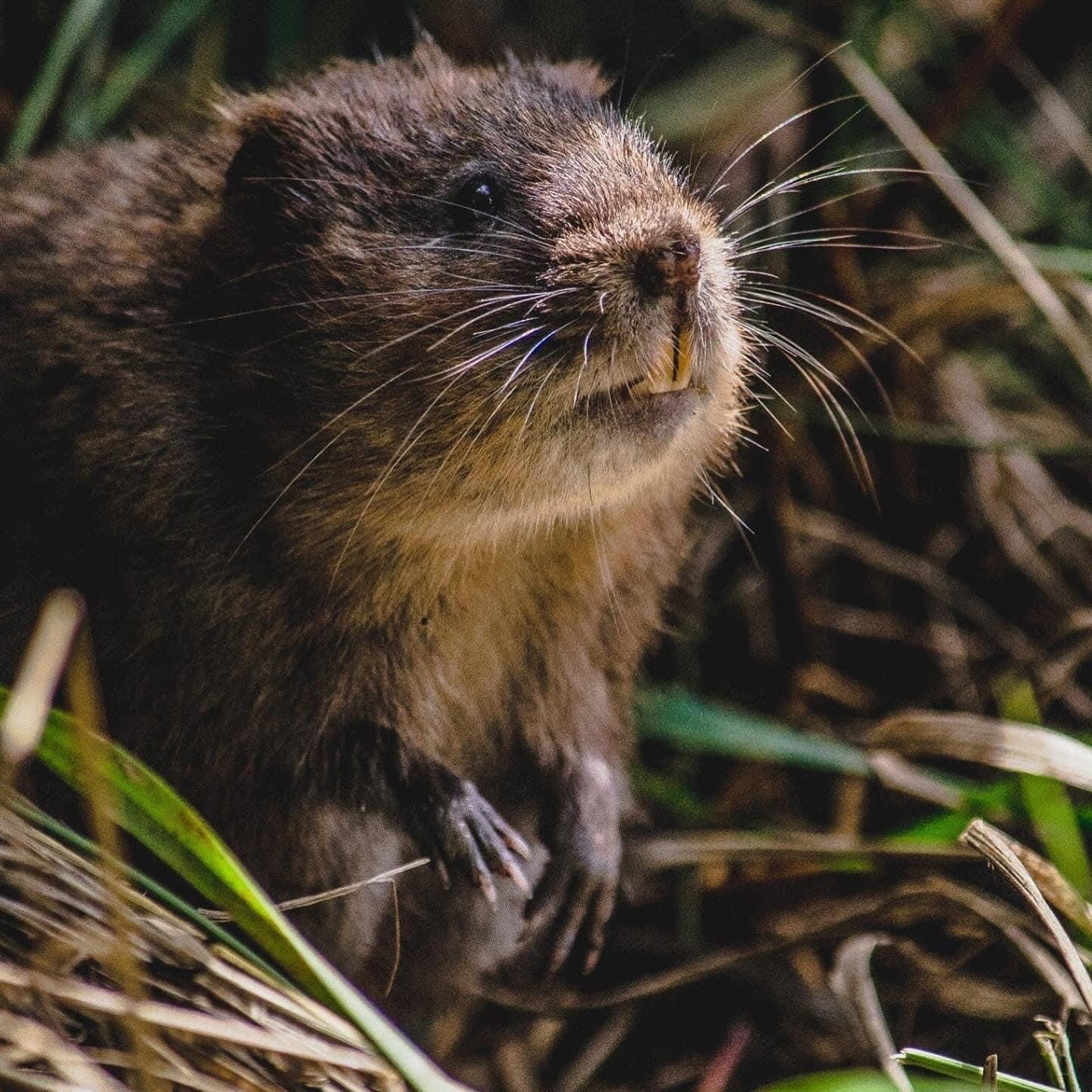Wildlife and Conservation 3: Water Voles
Water Voles, The Wind in the Willows and Bread & Fishes
I am honoured to share that today I have joined the Wildwood team as a volunteer working with wildlife and conservation.
Today I am participating in the Water Vole breeding project.
The character of ‘Ratty’ in Kenneth Grahame’s “The Wind in the Willows” was actually a water vole, not a rat. In Chapter 1, Ratty says to Mole:
Beyond the Wild Wood comes the Wild World," said the Rat. "And that's something that doesn't matter, either to you or to me. I've never been there, and I'm never going, nor you either, if you've got any sense at all.
My sister tells me that my nephew and godson loved this book as a child.
Image Bodleian Library, The University of Oxford: Ratty dances a jig. Illustrator Ernest Shepard.
My father was fond of this 1908 children’s novel and would recite short quotations from the book and sing the Irish folk song The Wind in the Willows/Bread & Fishes, when we children.
Youtube video clip: Wind in the Willows/Bread and Wine sung by Tommy Makem and Liam Clancy (1970s)
The European water vole is the only water vole found in Britain, but is absent on the island of Ireland.
Water voles can be mistaken for the similar-sized brown rat (Rattus norvegicus). There are a number of differences between the water vole and the brown rat:
The water vole’s tail is half its body length and is furry. In contrast, a rat’s tail is the same length as its body and is non-furry.
The water vole’s nose is blunt & rounded, whereas the rat’s nose is pointed.
The water vole’s ears are small, dark and buried in fur. A rat’s ears are prominent, pale & stick up above its head.
The waterhole’s fur is dark, chocolate or chestnut brown coloured & yellowish on its flanks. In contrast, the rat’s fur is pale grey-brown & grey-white on its flanks and belly.
Photo Wildwood Trust Kent
My morning was spent providing husbandry: fresh food (chopped cabbage, carrot, parsnip, apple and commercial rabbit food), water & clean water & food bowls. Water voles are messy - they urinate and defecate in the large water bowls that they swim in. Daily cleaning is therefore essential.
Water voles are placed either individually or in groups up to a maximum of three. Bedding is changed monthly and includes a bale of straw and composted bark chipping. The water voles create burrows in the straw and chipping.
In the afternoon, I supported colleagues in conducting health checks on water voles from Arne, Dorset, that had been quarantined for 2 months here at Wildwood, prior to being placed in the breeding programme.
The water vole is kinetic and females can be particularly feisty - standing up, squeaking and prepared to bite/nibble to avoid handling.
Photo author
Leather/suede protective gardening gloves, whilst holding the water vole at the base of the tail, together with a Pringles cardboard tube to support the body, were used when handling water voles.
The medical check involved sexing the water vole (is there a penis; have the testes descended or not; is the vagina imperforate or perforate); using a newtonmeter with the water vole inside the Pringles tube to measure weight; assessing body condition using a 4 point scale & checking for dental issues and mites.
History of Water Vole Conservation:
Water voles (Arvicola amphibius) have experienced a decline across the UK. The two main causes are:
fragmentation & loss of habitat
the accidental introduction of the American mink.
The construction of road/rail networks and housing developments splits vole territories, preventing migration between colonies. This colony fragmentation causes population inbreeding, resulting in subsequent localised extinctions.
Additionally, during the 1900’s, American mink were imported into the UK and farmed for their fur. Some escaped or were released, and a wild population developed. Slender female and young mink can follow water voles into their burrows, removing them from their territory over time.
Without significant conservation efforts and a change in legislation, water voles would soon become extinct in the UK.
Pre 2008, water voles received minimal protection under the Wildlife and Countryside Act 1981 which protected the habitat water voles occupied, but not the animals themselves. Extensive surveys indicated a significant decline in water vole numbers across the UK in the late 1990s.
On the 6th April 2008, water voles were granted full legal protection in England and Wales, under Section 9 of Schedule 5 of the Act. The Act offers protection against intentional killing, capture or injury and intentional or reckless disturbance, obstruction, damage or destruction of their burrows. If water voles are found during any construction project, all works must stop immediately to avoid breaking the law.
Thank You for reading Free-Styling @60.
Clicking the heart, sharing and/or commenting below all help other people find my work.
If you have enjoyed my writing and aren’t already a subscriber, please do sign up here - it’s free.









Lovely article
Keep writing